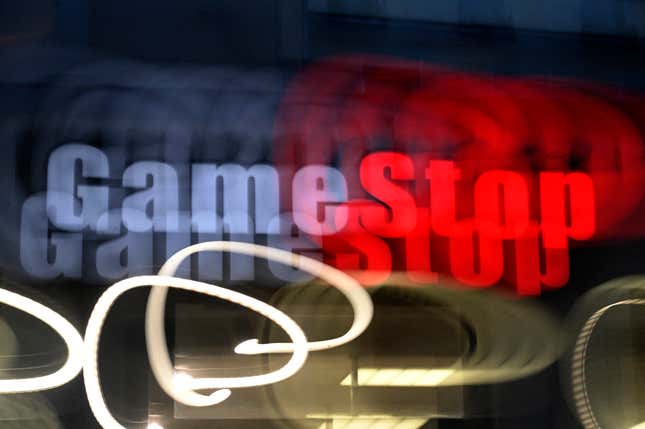
GameStop has officially thrown itself headlong into the web3 vipers nest with a new app release, though it’s hard to say whether its proposed population of gamers and game developers will take up the company on its belated, head-first jump into the crypto sphere.
The company announced in a terse release Monday that its new wallet allows “gamers” to store, send, and receive cryptocurrencies and non-fungible tokens across different apps, all from their web browsers. The company says this “beta” wallet uses a “self-custodial” Ethereum wallet, which means users have access to their assets through a 12-word key across their accounts.
The new wallet allows for ETH, NFTs and ERC20 tokens. A new app is available on Chrome Web Store, which should allow users to trade on GameStop’s upcoming NFT marketplace, planned for this July. In a tweet, GameStop said an iOS version of the app would be available “soon.” This new functionality follows on several tweets last week from GameStop reading “what the internet did for communication, blockchains do for value.”
GameStop has pushed hard on this crypto escapade, yet the subdued rollout of this new product makes it seem more like a hedged bet than an all-in on crypto. While crypto trading platforms like FTX have expanded to include traditional stock trading, GameStop seems rather late to the party. But maybe the company is used to operating five years behind the times. This is the same company that has become more known for being the butt end of the meme stock joke, and without that boost in notoriety it’s likely the company would be far more irrelevant today than it currently is.
Ethereum has not been known to be cheap, and GameStop has had to work on multiple levels to reduce the total “gas fees” that users pay to process transactions on the blockchain. It’s using Loopring to execute transactions on Ethereum layer 2, which the company says means cheaper gas prices than layer 1. When the company first announced its NFT marketplace, it included a $100 million grant in partnership with the layer 2 protocol Immutable X. The money, which of course comes in the form of tokens, is supposed to get more game creators on the NFT train.
But they’re not the only company looking to get in on a tech that’s currently in decline. Tech giant Meta keeps meeting roadblocks while trying to create its own form of cryptocurrency. And as more companies that have sat on the edge of irrelevance dip their toes into crypto, the more it seems that the market could easily become saturated.
It’s an open question whether a wallet geared toward gamers will be utilized by a community that is very divided on the “benefits” of Web3. When S.T.A.L.K.E.R. 2: Heart of Chernobyl devs GSC Game World announced plans to allow people upload themselves as NFTs into the game, many fans revolted. Ubisoft’s Ghost Recon Breakpoint added a NFT helmet, but only if you played for over 600 hours. Players weren’t big fans of that either despite reportedly bewildered corporate big wigs.
It’s not exactly a great time to be entering the crypto space. This past week saw crypto’s lowest market point since July 2021, and NFT-based games haven’t been spared. The pay-to-play Axie Infinity, whose NFT Pokemon-like creatures use breeding potions that are also NFTs, has seen its prices plummet.
That’s not to say other game publishers haven’t called blockchain technology the “future of gaming.” Many developers, however, are much more skeptical.